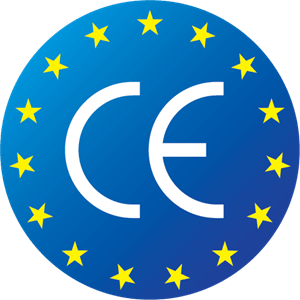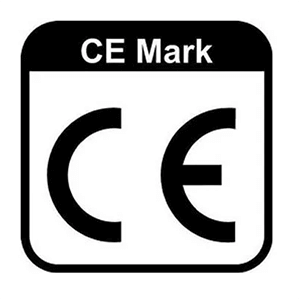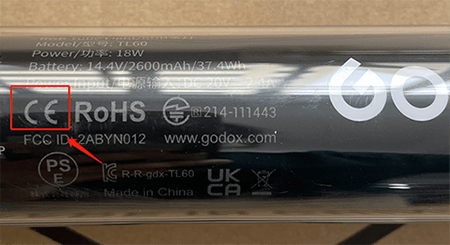If you sell products in European countries, you will find it required to affix the CE mark on products for legal sales. For many beginners to sell in the EU markets, they may not be quite clear about the regulations and directives of CE marking and whether their products are required for the marking or not.
So today this post will tell you what the CE mark is, and introduce the requirements for importers and manufacturers, as well as general principles and requirements for CE marking.
Now follow us to know about CE marking.
What is CE Marking Meaning?


If you purchase products in the EEA, you will find the CE marking affixed on the products or their packages. Actually, this CE mark is just like the passport of these products for selling in the EU markets.
“CE” is short from the Origin French Conformité Européene, which means meeting European standards; the CE mark is the symbol of CE certification in accordance with European product regulations and standards. It’s a mandatory mark affixed on products when they enter the EU markets for sales.
CE Marking in EU and UK
As mentioned above, the CE mark is a mandatory mark used within the EU markets. But a special political event—Brexit, changes the application area of this mark.
Before Brexit
All the countries and districts of the EU apply the CE marking directives and require the CE mark on products uniformly, including the UK markets. And this mark is mandatorily required for most categories of products.
After Brexit
On January 30th, 2020, Britain officially exited the European Union. After that, many rules and regulations of the EU no longer apply to Britain, which includes the CE marking.
Meanwhile, other countries and districts in the EU area are still required to use the CE mark on products.
But it does not mean products on the UK market will not require any product mark anymore. Instead, the UK government introduced a new policy of the UKCA mark to replace the CE mark.
If your products are manufactured and placed on the EU market, the CE mark is still required for it. But if you want to sell it on the UK market as well, you have to affix another UKCA mark on your products.
The new mark has come into official use since Jan 1st, 2021. But due to many existing products on the market already affixed with the CE mark, the UK government decided to extend its usage until 31st Dec 2022.
After that time, all the products sold in the UK markets should be affixed with the UKCA mark. However, the UK government introduced special regulations for using the marks: the CE mark can still be used in Northern Ireland, and the other three districts (England, Scotland and Wales) should use the UKCA mark.
Relations between UKCA & CE mark
Actually, both UKCA and CE marks play the same role for products, just applied in different areas and markets. The product categories, technical requirements and conformity assessment procedures of the two marks are the same.
You can get more about the relations between UKCA and CE mark in another post.
What’re CE Marking Requirements?
CE making has been available in the EEA markets since 1993 (nearly 30 countries). It is applied to products imported from countries outside the EU, like China, and also products manufactured within EU countries.
For example, when you buy a phone or a light in the EU markets, you can find the CE mark on these products. Without the mark, it means this phone or light is not reliable enough.
As for concrete CE marking requirements, the mark “CE” on products is required to be visible, legible and indelible. Also, the two letters should be clear in accordance with the required size (unless the product category has different requirements).
If you’re not sure about the mark, you can download the original mark from the official website of the EU.

The CE marking is the “passport” of products sold in the EU markets. But there are various categories and types of products, so not all the products are required to affix the mark strictly.
According to CE marking directives and regulations by the EU, different product categories apply to respective directives and requirements.
At present, over 20 CE marking directives and regulations are in respective applications, and everyone includes certain product types and scope, indicating corresponding requirements for the manufacturers, importers and distributors.
The main product categories of directives and regulations are as follows:
- Toy Satety
- Lifts
- Machinery
- Construction products
- Electromagnetic Compatability
- Hot water boilers
- Low voltage
You can also check more rules of product categories on its official website.
According to the directives, importers and manufacturers of products should attach importance to the CE marking on products:
- Importers need to verify the products of the manufacturer are compliant to make sure they can sell the product in the EU safely.
- Manufacturers should do the CE certification legally according to the product requirements.
So before selling products in the EU markets, you’d better check if your products are required to affix this mark or not, or it will not be allowed to sell normally.

How to Get CE Mark?
To get the CE mark, you should do the CE mark certification for your products. This part will list the following steps for getting the CE mark for your products:
- Ensure the applied EU directives for your product category;
- Get the compulsory requirements for your products;
- Ensure your product meets all the basic requirements of the Directive.
- Prepare required documents for your products;
- Find a certification body to do CE certification;
- Test and assess your products;
- Save the technical document;
- Get conformity declaration and CE mark approval
After getting the CE marking, you should affix it on your products according to the required rules. Pay attention, don’t affix it randomly, or it will be neglected or regarded as useless.
When is CE Marking not Required?
The answer to this question should depend on the countries and districts in Europe. In the EEA area, CE marking is required and valid permanently. In the UK, the CE marking has been replaced by the new UKCA mark since Jan 1st, 2021. But considering the pre-existing stock and adaption time of all businesses, the CE mark for some products in the UK market will be valid before 31st Dec 2022. So from 1st Jan 2023, CE marking will not be required in the UK.
What if Products are not Affixed with the CE Mark?
If your products sell in the EEA markets, you must affix the CE on your product, or your product will be not allowed to sell in the area. Someone may sell products without the mark, but once found, fines and penalties are waiting for you.
Will the USA Accept CE Marking?
No, the US market will not accept CE marking. As mentioned above, the directives and requirements of CE marking are according to EU regulations and standards. So this mark is only available in EU countries. As for the US market, it has its own certificates and required marks for products, like FCC. CE and FCC have different compliance standards.
You may see products with many marks, including CE marking, that can be accepted in the US market, but it does not mean the USA accepts CE marking.
What’re Benefits of CE Marking?
The mandatory requirements of CE marking are to protect the safety of life and property in the European Union and it regulates the market environment and market order effectively.
With the CE on products, customers will regard the product they buy as reliable ones, which indicates the products have passed strict tests and verification; sellers can sell their products on the EU markets legally, and they can use this mark to prove the conformity of their own products.
The End
We hope this post will help you know the necessary things about CE marking in the EU and UK better if you sell your products in these markets. If you’re still confused about CE marking, please leave your comments or questions, and we will give you more detailed explanations.





